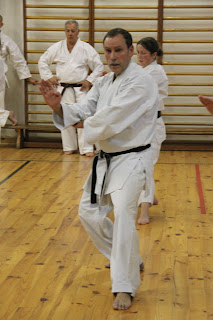
Water intake is still unclear from the karate and the instructors. Some still persist in declaring "do not drink, it cuts the legs." This recommendation is stupid and dangerous is still used in some dojo. Stupidity at this level becomes a real danger ...
Water is the most important constituent of the body. It represents 60-70% of our body composition. For an athlete, unless the body temperature rises, the more beneficial it is. It is therefore advantageous to cool as possible and by all means, hence the need to drink. For if the body temperature rises, we are no longer able to provide effort. It's that simple!
Do not drink leads to a state of dehydration. This condition leads to negative consequences especially in karate, because it severely limits the performance martial.
The analysis is simple: less water = less blood, less blood = less capital oxygen = less performance.
Dehydration also causes loss of muscle strength. Because the loss of water leads to weight loss. A loss of 5% of this mass is lower your muscular performance by 10%. Strength activities and fighting such as karate are particularly concerned.
So when thirsty during a workout, it is primarily a feeling, but also an indicator that lights on your dashboard. It tells you that you are dehydrated. When thirsty, it's already too late. Drinking at this time will calm this feeling, but that does not meet your real needs, you are not rehydrated. The rule to follow to avoid such discomfort is to drink without being thirsty, that is to say do not wait this late signal of dehydration. The fluid intake should be split. It should drink little but often. 4-5 sips every time. If you drink too much, it will cause bloating and even difficulty breathing.
Water can be slightly sweet, it should preferably be eaten fresh but not chilled. When
drink? Drink before a competition is unnecessary because the body is unable to stockpile water. Result: the karateka will have strong urges to urinate. During training, it is advisable to drink whenever possible, when the instructor permits. It is important physiologically and psychologically. The act of drinking and provides benchmarks that promotes concentration. After training, you should use a lightly carbonated water to form a reserve and to fight against fatigue.
Cheers!









